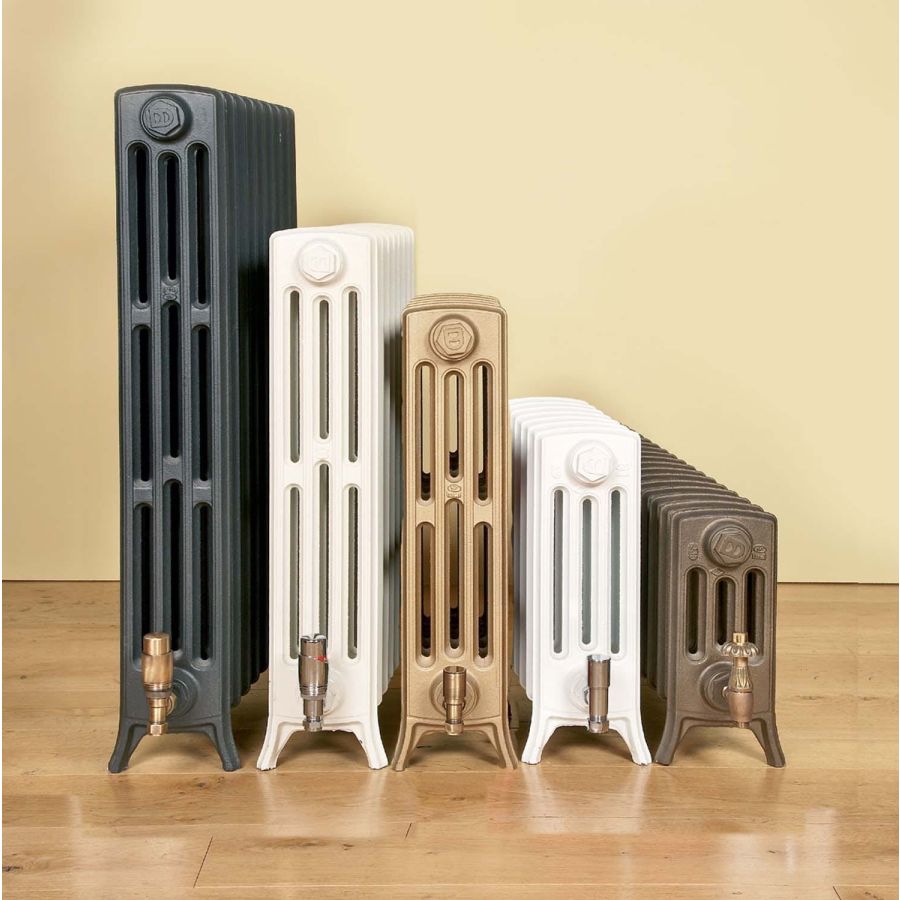
Pros and Cons of Cast Iron Radiators
Share
Cast iron radiators have been a staple in heating systems for many years. They are appreciated for their durability and timeless design but also come with some drawbacks. Here's a breakdown of their pros and cons:
-
Durability & Longevity:
- Cast iron radiators are highly durable and can last for several decades, often outliving other radiator types.
- Cast iron radiators are highly durable and can last for several decades, often outliving other radiator types.
-
Effective Heat Retention:
- Cast iron holds heat for a longer time even after the heating system is turned off. This provides a steady and consistent level of warmth.
- Cast iron holds heat for a longer time even after the heating system is turned off. This provides a steady and consistent level of warmth.
-
Energy Efficiency
- Due to their heat retention properties, cast iron radiators can be more energy-efficient, as they continue to radiate warmth long after the heating source is turned off.~
- Due to their heat retention properties, cast iron radiators can be more energy-efficient, as they continue to radiate warmth long after the heating source is turned off.~
-
Aesthetic Appeal:
- These radiators are often considered stylish and classic, with a vintage or antique appearance that suits many home styles, especially in period properties or those with a traditional design.
- These radiators are often considered stylish and classic, with a vintage or antique appearance that suits many home styles, especially in period properties or those with a traditional design.
-
High Heat Output:
- Cast iron radiators have a large surface area, allowing them to provide significant heat output, which makes them suitable for larger rooms or colder climates.
- Cast iron radiators have a large surface area, allowing them to provide significant heat output, which makes them suitable for larger rooms or colder climates.
-
Less Noise:
- Unlike some modern radiators, cast iron models tend to operate more quietly, without the gurgling or hissing sounds that some other types can produce.
- Unlike some modern radiators, cast iron models tend to operate more quietly, without the gurgling or hissing sounds that some other types can produce.
-
Environmentally Friendly:
- As they last for many years, cast iron radiators don’t need to be replaced as often, making them more eco-friendly in the long term.
Cons of Cast Iron Radiators:
-
Heavy Weight:
- Cast iron radiators are heavy, which can make installation more difficult. Their weight may also be a challenge if you're looking to relocate them or if you're working with weak floor structures.
- Cast iron radiators are heavy, which can make installation more difficult. Their weight may also be a challenge if you're looking to relocate them or if you're working with weak floor structures.
-
Slow to Heat Up:
- Cast iron takes longer to heat up compared to lighter materials like aluminum or steel. This means the radiator may not be as responsive in terms of quick temperature adjustments.
- Cast iron takes longer to heat up compared to lighter materials like aluminum or steel. This means the radiator may not be as responsive in terms of quick temperature adjustments.
-
Cost:
- Cast iron radiators can be more expensive both in terms of initial purchase price and installation costs compared to other radiator types.
- Cast iron radiators can be more expensive both in terms of initial purchase price and installation costs compared to other radiator types.
-
Maintenance:
- Over time, cast iron radiators may need maintenance to prevent rusting, especially in older models. They can also require periodic painting to maintain their aesthetic appearance and prevent corrosion.
- Over time, cast iron radiators may need maintenance to prevent rusting, especially in older models. They can also require periodic painting to maintain their aesthetic appearance and prevent corrosion.
-
Size:
- Cast iron radiators tend to be bulkier than modern, sleek models. This can take up more space in a room and may not be ideal for smaller areas.
- Cast iron radiators tend to be bulkier than modern, sleek models. This can take up more space in a room and may not be ideal for smaller areas.
-
Risk of Damage:
- Due to their weight, cast iron radiators are prone to damage if dropped or struck. Cracks or chips may form if the radiator is mishandled.
- Due to their weight, cast iron radiators are prone to damage if dropped or struck. Cracks or chips may form if the radiator is mishandled.
Overall, cast iron radiators offer a blend of traditional aesthetic appeal, durability, and heat retention but come with trade-offs in terms of weight, speed of heating, and maintenance. Their suitability depends on the specific needs and style of the space.
Come and see a wide range of cast iron radiators in our Bath showroom.
